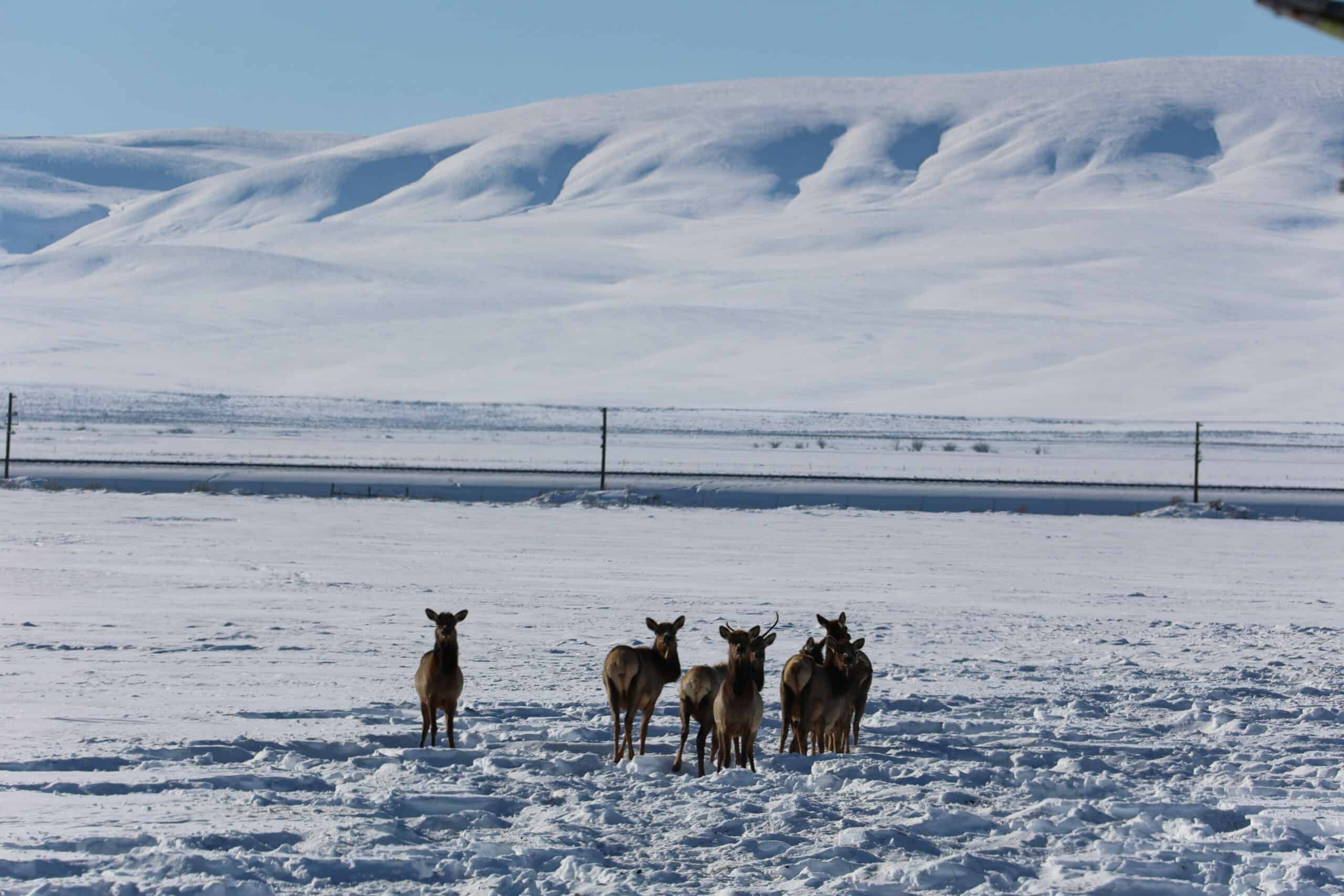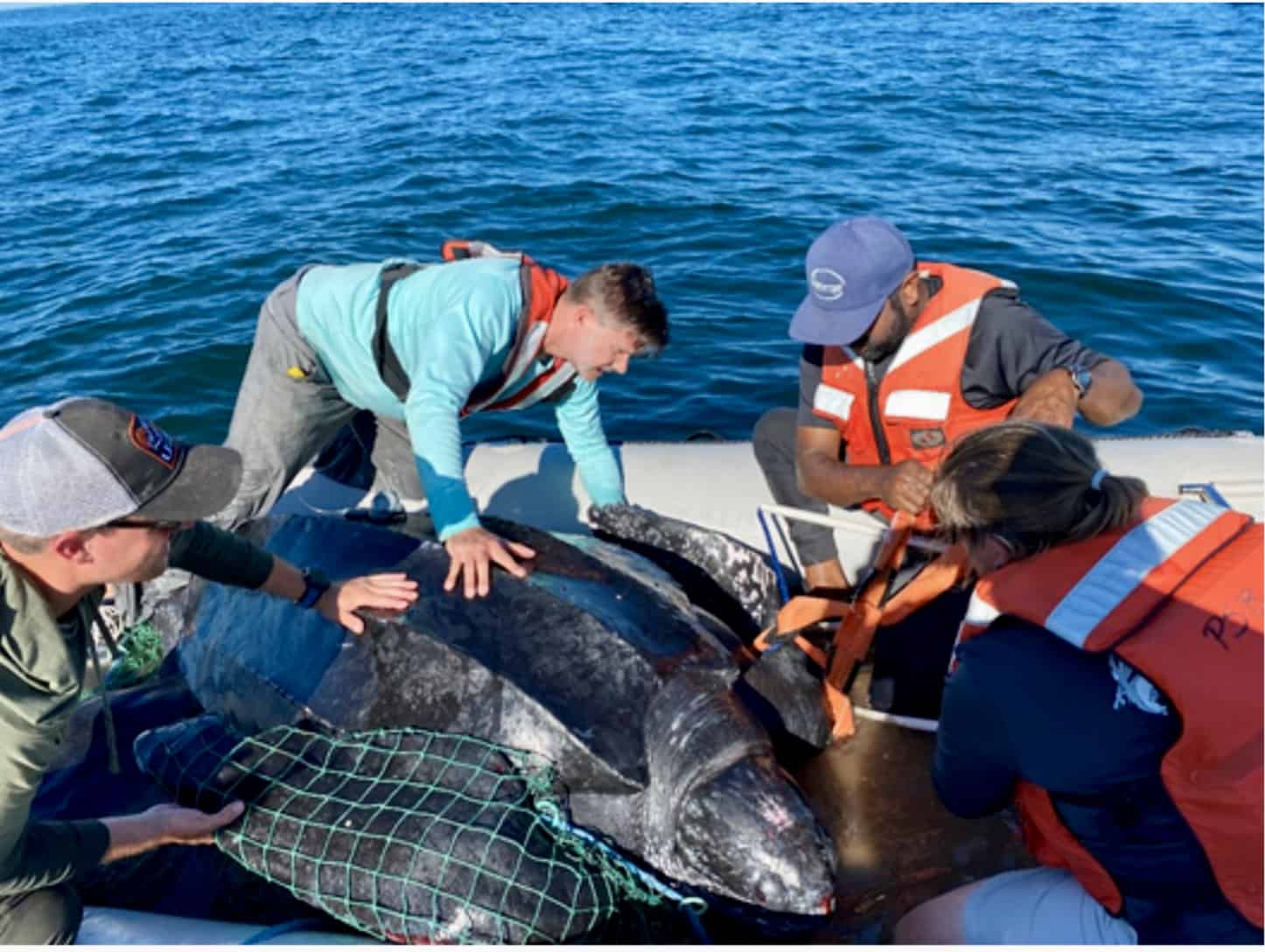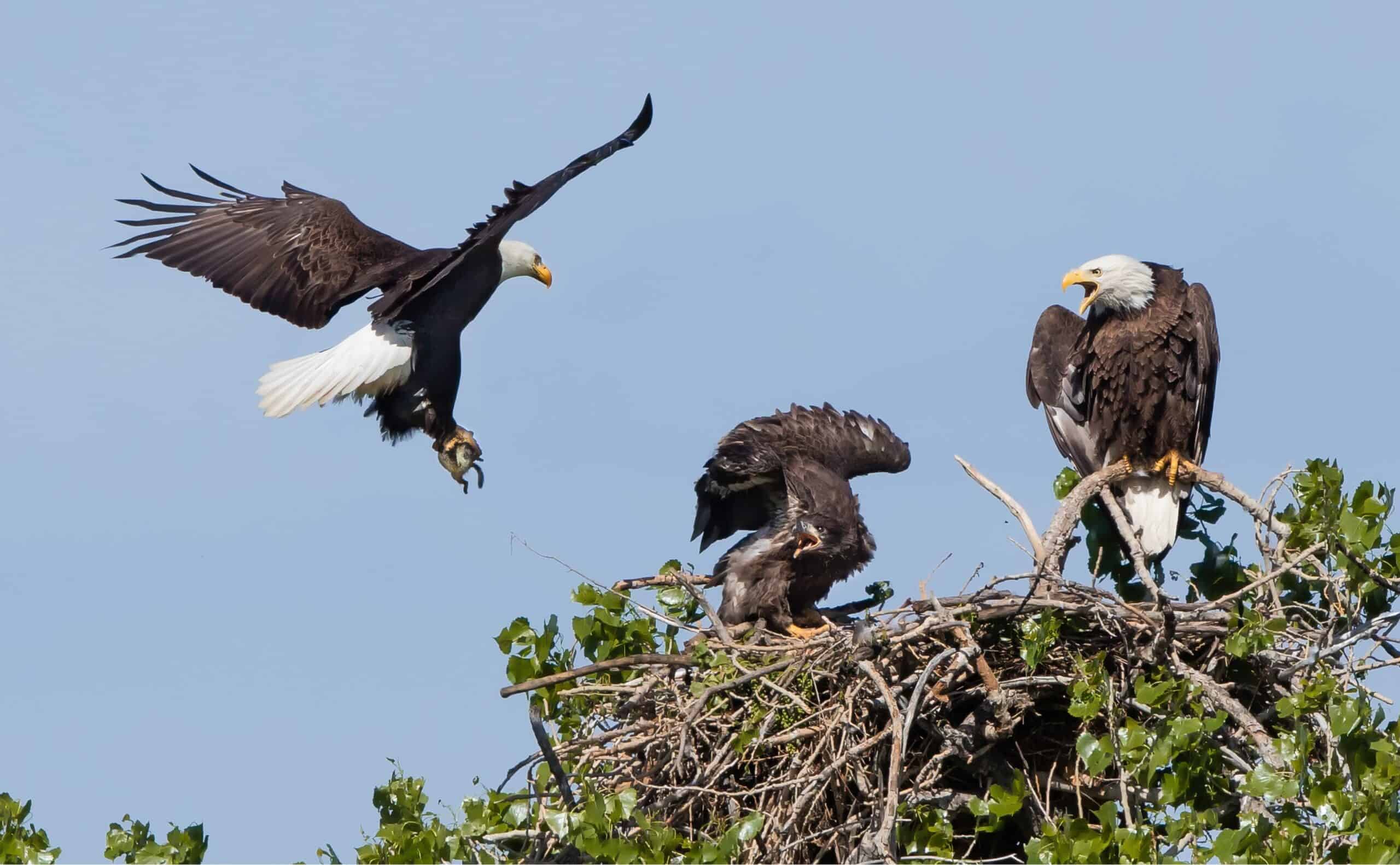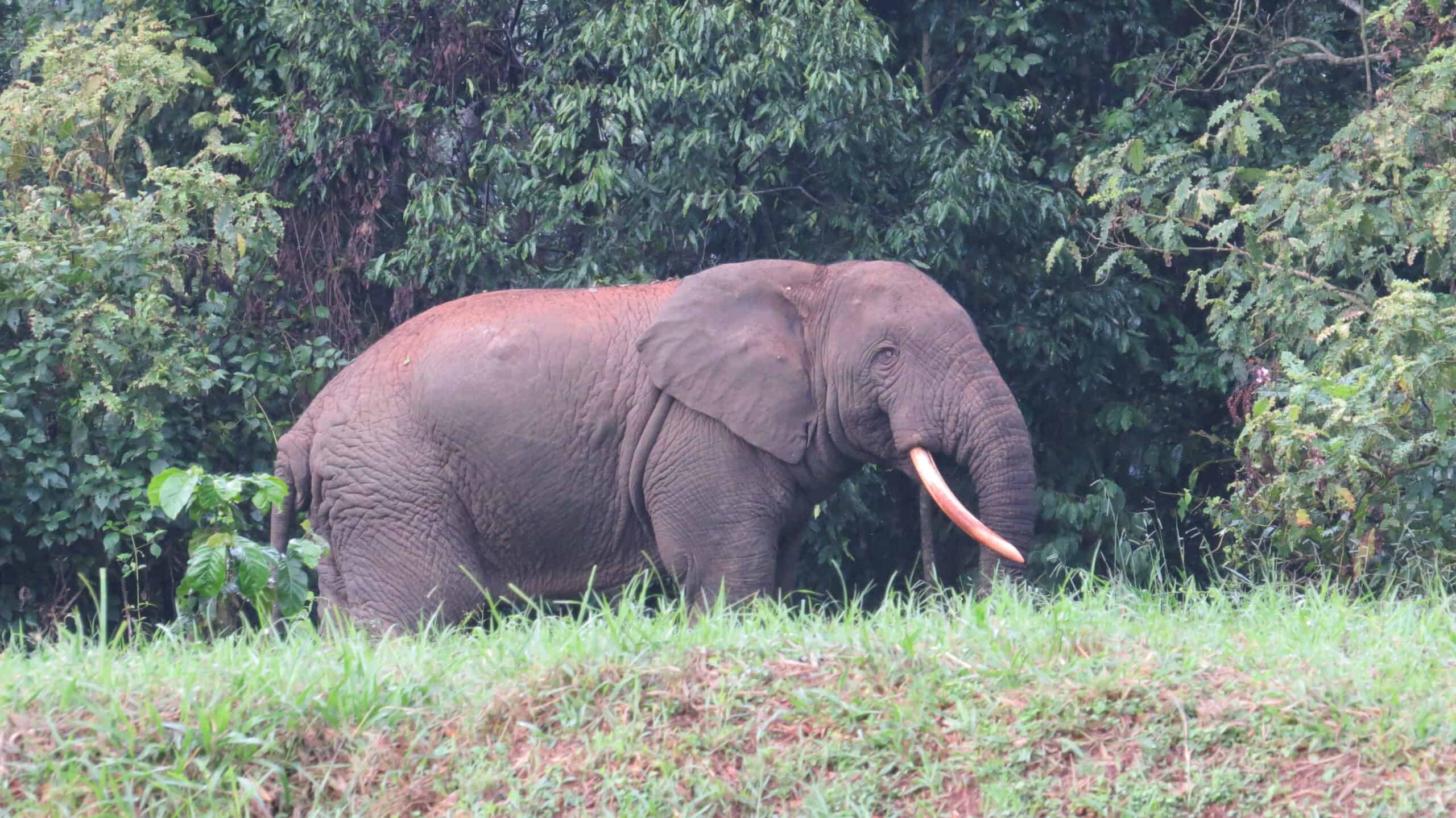Share this article
Wildlife Featured in this article
- mule deer
- pronghorn
- elk
Extreme winter causing massive ungulate die-off in Rockies
Mule deer and pronghorn are succumbing to starvation in parts of Wyoming and Utah
An exceptionally extreme winter has resulted in a high number of ungulate deaths in parts of the Rocky Mountains in Wyoming and Utah.
The problem, which involves a larger-than-normal volume of snowfall in some regions compounded by colder-than-usual temperatures, is causing starvation among mule deer, pronghorn and even elk.
“Some of the old-timers are saying it’s the worst winter they’ve seen since the ‘40s,” said Sean Yancey, a wildlife management coordinator for the Wyoming Game and Fish Department’s (WGFD) Green River region. “It’s just an astonishing amount of loss.”
These ungulates typically subsist on the exposed tips of new sagebrush growth. But the heavy snowfall in some areas means these plants are buried and harder to access.
“[Ungulates] are burning tons of energy and fat trying to get to exposed vegetation,” Yancey said.
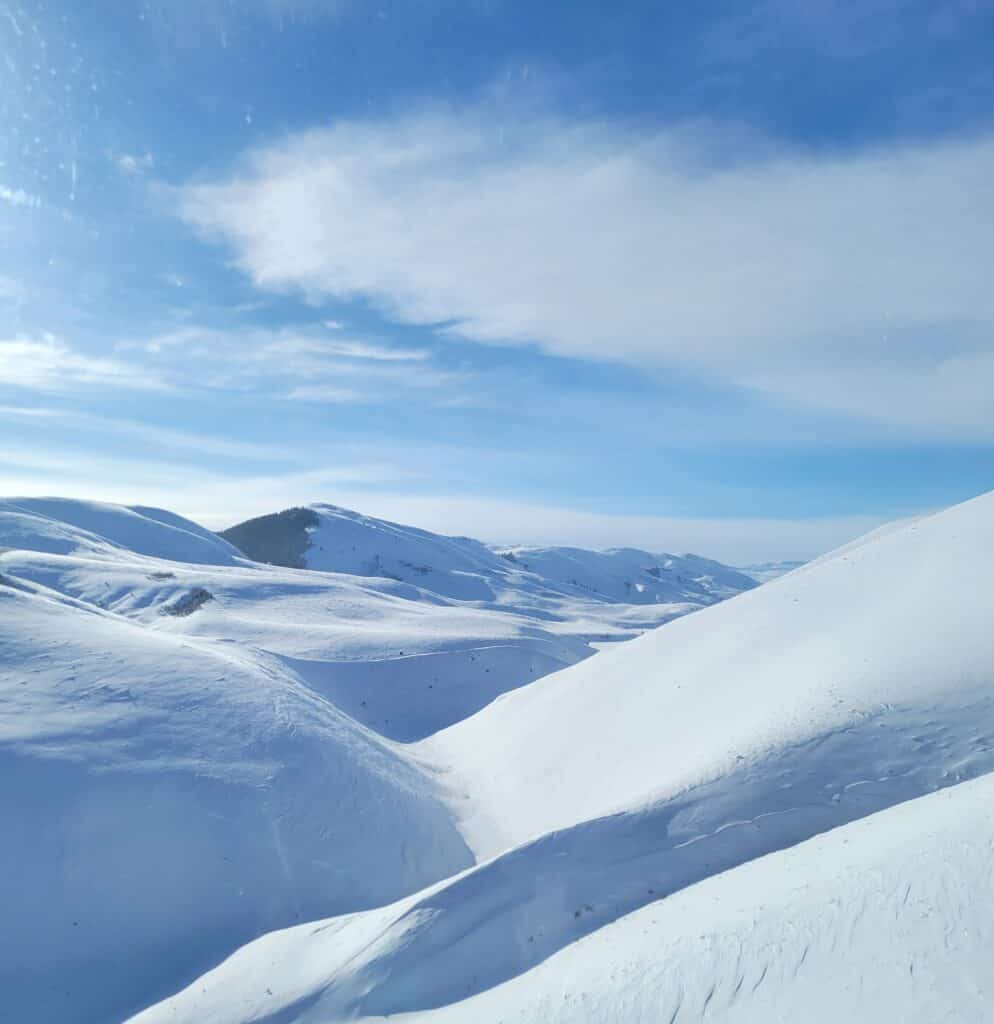
Yancey and his colleagues track mule deer (Odocoileus hemionus) and pronghorn (Antilocapra americana) using GPS collars in their region of southwestern Wyoming to monitor populations.
This winter, they found an unusually high number of animals dying. Wildlife managers have already lost about 90% of their tracked mule deer fawns and 30-40% of adult females in the Green River region. Around half of adult bucks have died—males are often in bad shape after the fall rutting season and less capable of surviving extreme conditions.
“This winter has lingered longer than usual,” Yancey said. “A lot of these animals are burning through their fat. They don’t have anything left, and they’re starving to death.”

As for pronghorn, wildlife managers have seen about half of the animals die in the Red Desert region of Wyoming. The WGFD said that this region had an extremely hard winter, resulting in strong winds and deep, crusted and drifting snow.
“Antelopes are the ones that are really taking it hard this winter,” Yancey said of pronghorn, adding that is has to do with the way they store fat compared to other ungulates.
Elk (Cervus canadensis) have also felt the impact of the extreme weather, though perhaps not as strongly given their hardier nature.
Nonetheless, wildlife managers have had to resort to feeding elk in some areas to keep them from raiding haystacks. Aside from the damage they cause to farmers’ resources, the danger of elk transmitting brucellosis also increases if they come into closer contact with cattle. The supplementary feeding is intended to reduce this contact between elk and cattle.
These die-offs may represent the natural ebb and flow of the ungulate herds. Normally, the area suffers an extreme winter every five to seven years, creating conditions that lead to lower survival in these species.
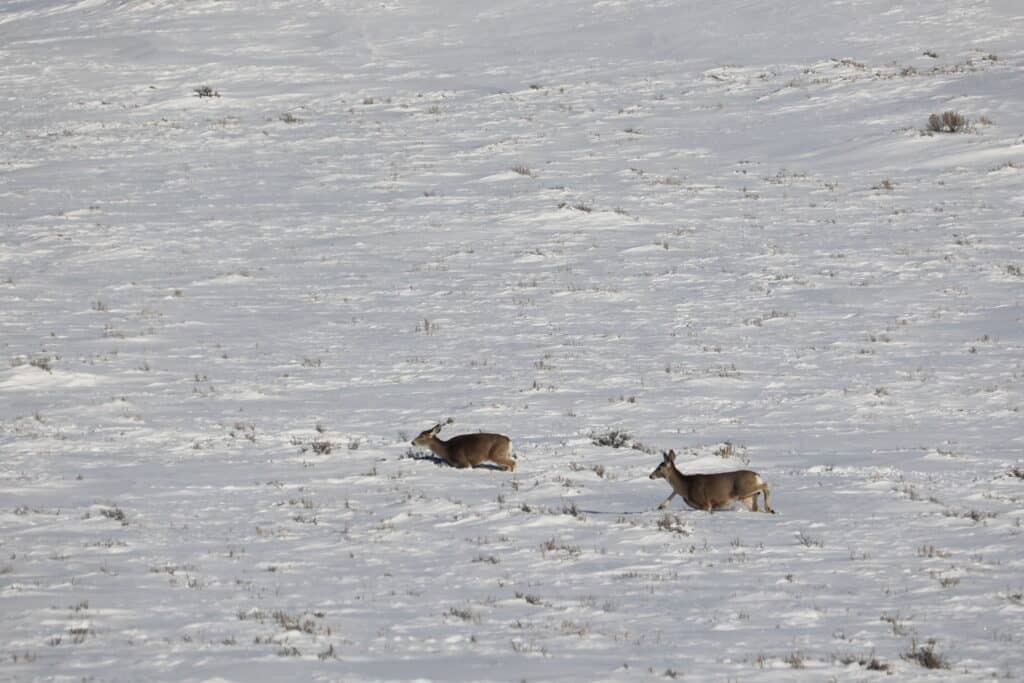
But Yancey said there have been three or four bad winters in the past eight years, compounded with drought conditions during other seasons.
Normally when bad winters occur, the surviving animals emerge with an advantage—there are fewer ungulates on the landscape competing for mates and resources. This often results in a population boom the year following large die-offs. Nonetheless, the recovery may take several years. “In general, they have a natural way of rebounding from something like this, but there will be a lingering effect on population for some years, I expect,” Yancey said.
If several bad winters occur in a row, the effect could be more long-lasting. “It’s going to be a slow process to build some of these herds back up, unless we get another bad winter, and then we’re really in a bad place,” Yancey said.
Reduced hunting in Wyoming, Utah
Mule deer and pronghorn populations aren’t yet a conservation concern in southwestern Wyoming, Yancey said. But the die-off has had an effect on hunting season—the already limited quota on pronghorn hunting has been scaled back, and wildlife managers have also reduced mule deer season. “We took already conservative seasons and essentially cut them in half,” Yancey said.
Meanwhile, just across the border in Utah, wildlife managers have taken steps like banning the collection of shed antlers in an effort to reduce the harassment of ungulates in this vulnerable winter.
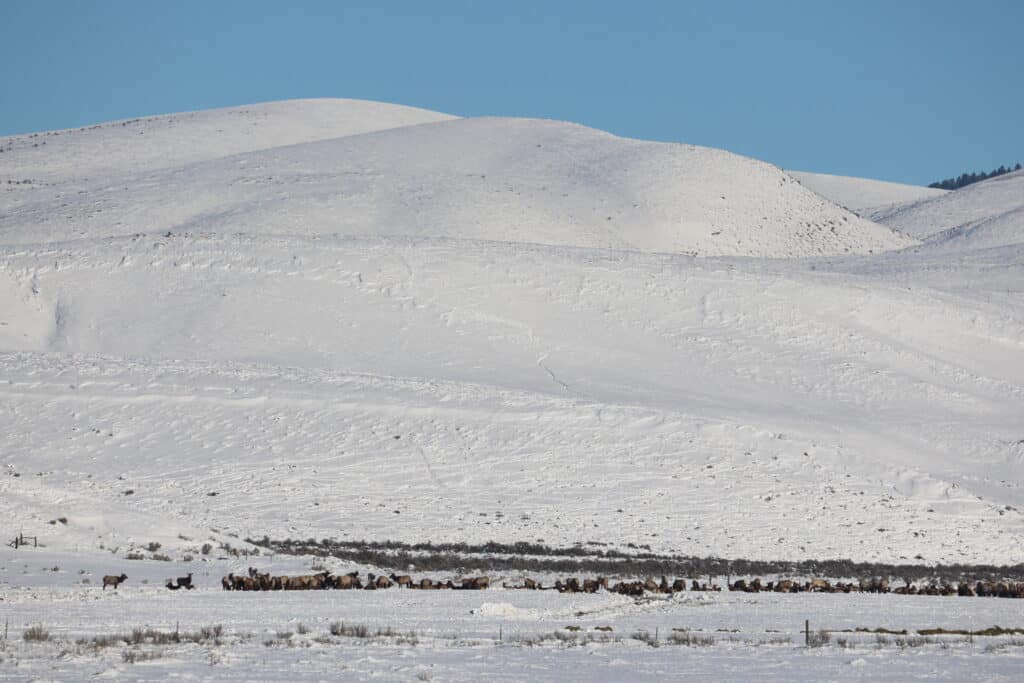
In early April, the Utah Division of Wildlife Resources announced the closure of 24 wildlife management areas to protect wintering deer in northern and central Utah.
“Unfortunately, the deer herds in the northern areas of the state were hit pretty hard this winter, and despite our feeding efforts, we are seeing high mortality rates in some areas,” UDWR big game coordinator Dax Mangus said in a press release. “In these types of conditions, big game animals are weakened and highly vulnerable to repeated, ongoing human-caused disturbances, so we’d like to prevent any unnecessary disturbances to the deer during this sensitive time of year.”
The harsh winter conditions are ongoing. Yancey said that his office was shut down in early April due to a snowfall of 20-25 inches.
Header Image: Mule deer are among the ungulates affected by extreme winter conditions in parts of Wyoming and Utah. Credit: Angela Clark/Wyoming Department of Game and Fish



